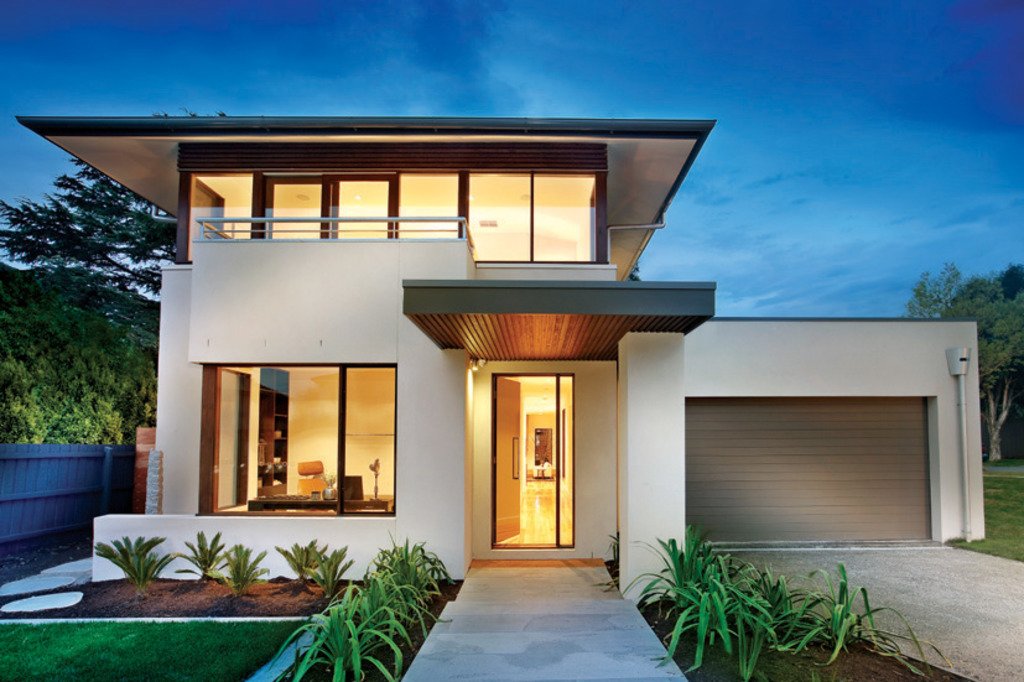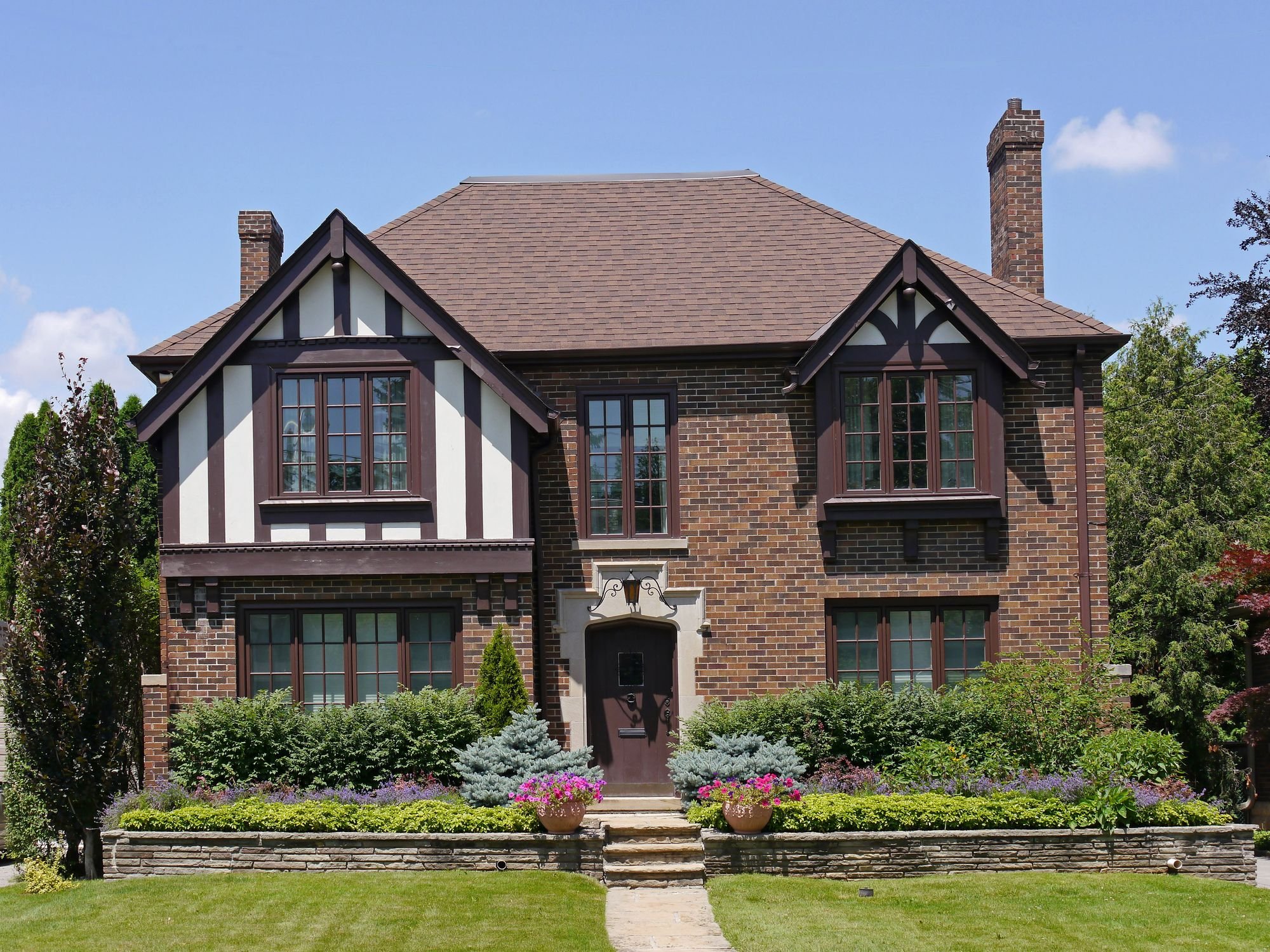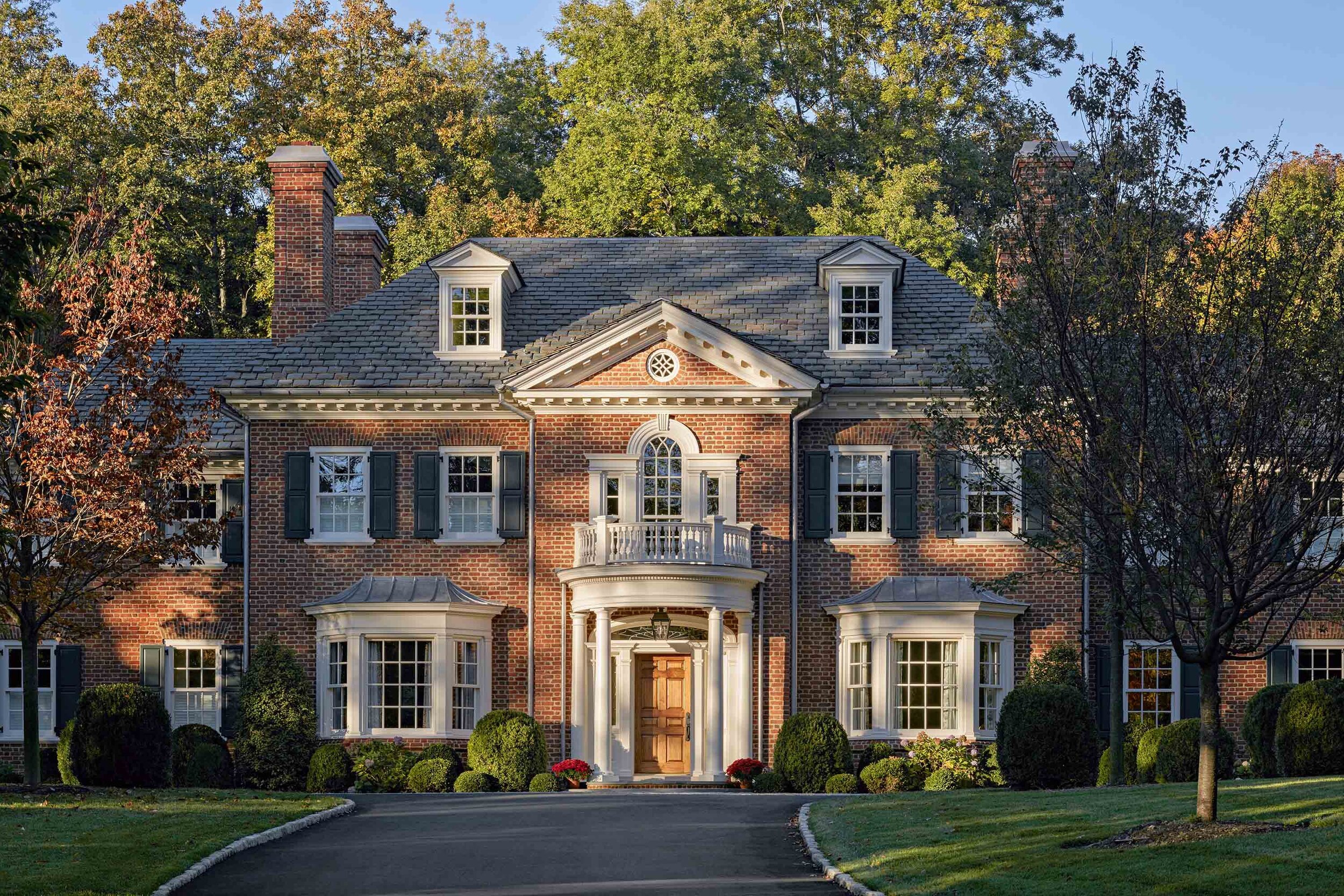Reject modernity, embrace tradition: Exterior home design edition
I don’t know much about residential architecture, but I do know that the recent trends in exterior home design make my stomach hurt. From the bland colour palette to the lack of greenery, these houses gives me an unsettling feeling. Before writing this article, I couldn’t find the words to describe this style so I tried to do some research and realized, actually, no one knows how to describe it. The descriptions (or lack of) leave something to be desired just as much as the homes itself.
I’ll leave it up to you to describe what you’re seeing in the image below. If I may suggest a few adjectives: cold, uninviting and characterless. Perhaps a house but definitely not a home.
Source: Sina Architectural Design
Although I’ll probably never own a detached home and should therefore have zero say in this matter, I still find myself clutching my crystals everyday in my hands hoping for the trends to change their trajectory — ideally towards one of the following suggestions.
Tudor Revival
Source: House Beautiful
Like a cottage out of a storybook, the Tudor is all about natural materials, steeply pitched roofs and timber detailing. The Tudor style originated in England around the mid-15th century during the Tudor period, and eventually emerged in North American architecture in the late 19th century as a modernized version called the Tudor Revival. What I like about the Tudor is that it doesn’t strive to be symmetrical, which we can see in the placement and sizing of the gables and windows, and its use of several different natural materials including brick, stucco/stone and timber. I feel like this one grants a lot of creative flexibility to the designer, ensuring no Tudor looks the same.
Georgian
Source: Charles Hilton Architects
Another design hailing from Britain, Georgian architecture emerged during reign of King Georges I-IV from 1714 to 1830 and drew much of its inspiration from the Italian Renaissance period. Georgian homes are best known for being highly symmetrical and proportionate, having a rectangular or square shape, a hipped or side-gabled roof and often two chimneys. In terms of materials, the exterior typically wears brick but stucco or stone are reminiscent of this style, too. Although I’m not the biggest fan of the symmetry aspect, I think the decorative and ornamental aspects of the Georgian design bring a lot of character and warmth to its appearance. By this, I mean the dominant brick exterior, columns and arches around the front door, sashed windows and detailed cornice moulding. This house is not afraid to accessorize.
Queen Anne
Source: liveslow via Getty Images
What I love about the Queen Anne is that she’s not afraid to be very over the top. No aspirations for simplicity or clean design, just a bunch of different elements and shapes, and often colours, all mashed together into one dwelling. This eccentric style became popular between the late-19th and early-20th centuries and, according to Historic Places, was characterized by its “asymmetrical facades, steeply-pitched and irregular rooflines, front-facing gables, overhanging eaves, circular or square towers with turrets in corners, unusual windows, wraparound verandas, highly ornamented spindles, fish scale siding, detailed textures and bright colours.” The Queen Anne is doing the most.
Although I probably won’t see any of these styles make a mainstream comeback in my lifetime, a girl can dream. At the very least, I wish to witness the demise of the contemporary home.




